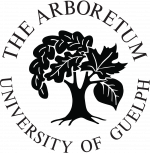The Gene Bank, 2011
The Arboretum was one of the first institutions to establish a living gene bank dedicated to archiving known populations of rare woody plants native to Ontario. The Arboretum Gene Banks grew from the long-term vision outlined in The Arboretum’s first (1970) master plan, that recognized the impact of urbanization and non-native species on southern Ontario forests. The Arboretum established the Gene Banks as a living archive containing the genetic diversity of many rare Ontario species.
In 1979, The Arboretum launched its Rare Woody Plants of Ontario Program, called Picking up the Pawpaws. The goal was to survey and document the status of rare woody plant species in Ontario and inform landowners of the significance of the plants on their property. Seeds or cuttings were collected from most of the wild populations or individual plants with the goal of establishing an ex-situ conservation stand for each species as a genetic back up in case in-situ conservation efforts did not maintain survival of the remnant populations. Many landowners participated in these conservation efforts, some of whom were not aware of the unusual tree or shrub species growing on their property. The living Gene Banks at The Arboretum reduce collection pressure of small surviving threatened and endangered wild populations, increasing the ability of those populations to naturally regenerate.
Today over 30 species of rare woody plants are archived at The Arboretum, across both Gene Banks and formal collection areas as outlined in the Arboretum Master Plan. Detailed provenance data is stored in The Arboretum’s plant records database (IrisBG) and guided by our data management plan. Thus, these Gene Banks represent decades of effort, time, financial and intellectual contributions made by Arboretum staff as well as many community members and private landowners.
To learn more about the Gene Banks, visit the Woody Plants page on The Arboretum’s main website.

Big Shellbark Hickory (Carya laciniosa) in the foreground and Chinquapin Oak (Quercus muehlenbergii) in the background show off their hues of green during the summer.

Close up of a Blue Ash (Fraxinus quadrangulata) sapling.

Kentucky Coffee Tree (Gymnocladus dioicus) saplings in the distance.

Young Paw paws (Asimina triloba).

Gene Bank trees in the winter.



